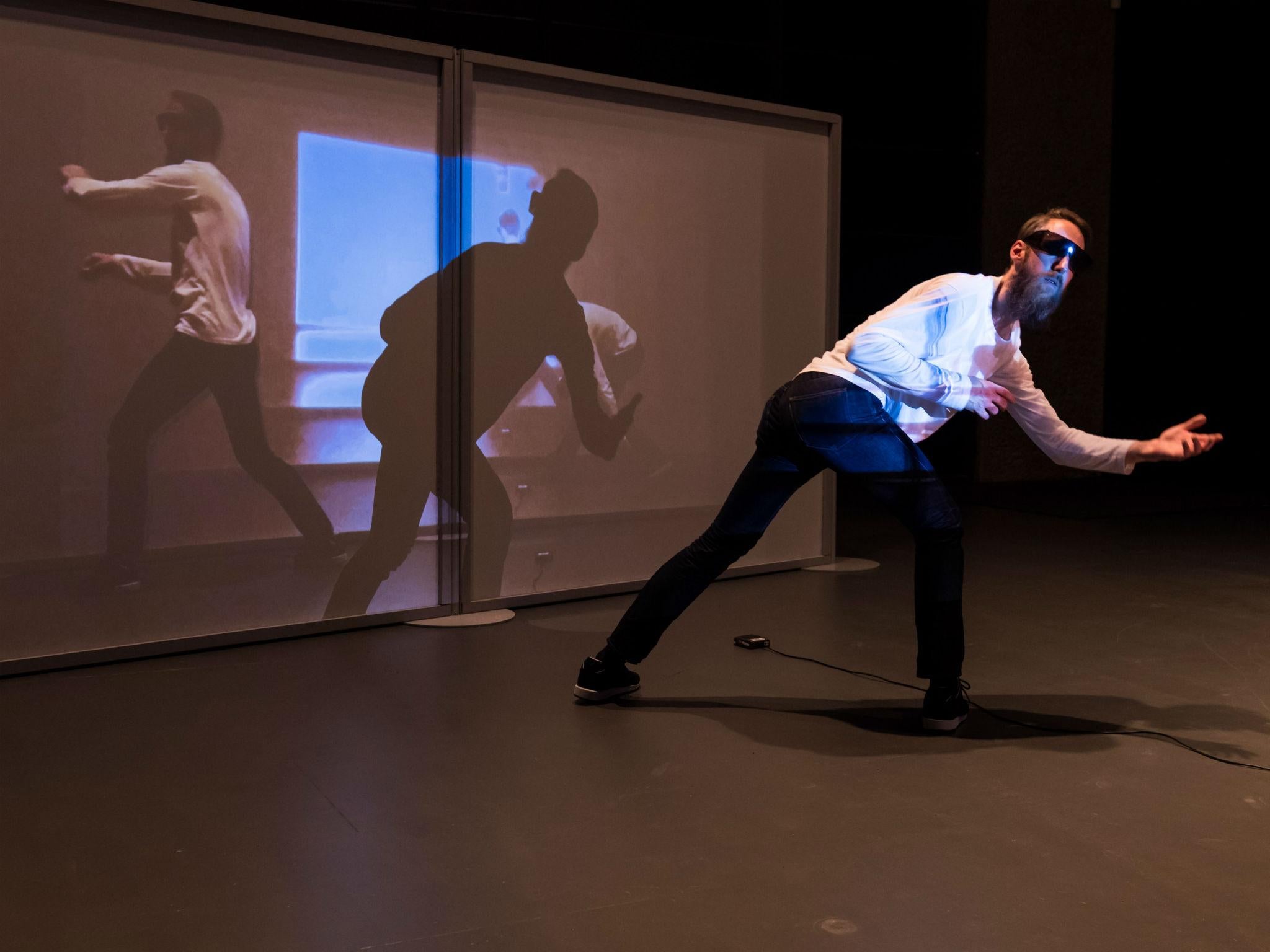Siobhan Davies Dance, Barbican Curve Gallery, London, review: It attempts to step beyond the cliché of body language to reveal something deeper
Siobhan Davies’ latest collaborative dance project explores body language in a four-hour loop at the Barbican’s Curve gallery

Two hands clasped together; a single hand curled into a fist; a pattern is made while touching the forehead, followed by the chest and the shoulders. All these gestures say something. Perhaps. For some, body language makes politicians appear honest and the interrogated confess. For others, it’s nonsense.
Siobhan Davies’ new project material / rearranged / to / be attempts to step beyond the cliché of “body language” to reveal something deeper through collaborations with artists and scientists and by responding to eccentric art historian Aby Warburg’s obsessive cataloguing of the “language of gesture”. The result is a shifting landscape of dance experiments that unfold around the Barbican’s Curve gallery in a four-hour loop. It’s also a challenge for critical summary: you never know what you might get. Subverting the display of “performance” it requires multiple visits to be understood. Not ideal material for a press viewing.
On one visit you will see Andrea Buckley’s improvisatory work In Tension at the gallery’s far end, while on another visit she will have been replaced by Efrosini Proptopapa’s animations. Steel frames are dismantled and move around the gallery as the dance performances evolve. As is the nature of experiments, some are more successful than others. In and among art work by Glithero and Emma Smith, the audience framed the bodies of the dancers. Prepared without reference to a mirror, the inward concentration of Davies and Helka Kaski’s Figuring and Matthias Sperling’s Loop Atlas created an atmosphere of intensity reinforced by the repetitive, ritualistic nature of their movements. Sperling’s work was a highlight: rhythmic repetitions performed between a camera and screen resulted in simultaneous versions of different movements in a swirling, ghostly, loop. The effect was mesmeric.
The installation’s success lies in combining mesmerism and melancholy. Central to this are Jeremy Millar’s dark geometric mobiles that make physical Warburg’s battle with depression and contribute to a haunting sense of his absent presence. This evocative emptiness, reinforced by empty chairs and footprints, is either moving or disappointing, depending as much on the audience’s mood as their knowledge of critical theory.
It’s a performance installation that asks more questions than it answers. Does science pull us away from the source of dance’s power? It is true – ironically, it’s scientific studies that demonstrate – we like technical explanations for intuitive feelings. But surely dance must continue to occupy the space beyond scientific explanation in order to exploit its power?
Join our commenting forum
Join thought-provoking conversations, follow other Independent readers and see their replies
Comments